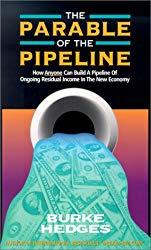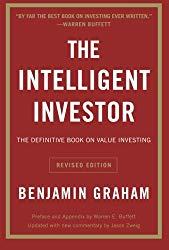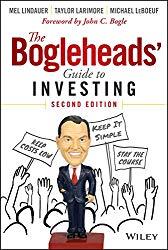If you’ve started a job and/or spent a little time going through personal finance blogs, you’ve probably had people telling you that you should invest. In some cases, they may have said that you should “invest in yourself” or “invest in a new car,” but this really isn’t the kind of investing we’re talking about here. In this article, we’ll talk about investing in the stock market.
But first, let’s talk about why you should invest in the stock market. In all has to do with what is called “passive income.” Probably the best illustration of passive income comes from a fable by Burke Hedges called The Parable of the Pipeline. In this story, two brothers work by carrying buckets for income. While they are young and strong, they can make all that they want by just working harder and carrying more buckets each day.
In this series of articles under the category of “The Basics of Money Management,” we’ll go through some of the basic things you need to know to be a fully functioning, financially fit adult in the modern world.
(Note, if you click on a link in this post and buy something from Amazon (even if you buy something different from where the link takes you), The Small Investor will receive a small commission from your purchase. This costs you nothing extra and is the way that we at The Small Investor are repaid for our hard work, bringing you this great content. It is a win-win for both of us since it keeps great advice coming to you (for free) and helps put food on the table for us. If you don’t want to buy something from Amazon or buy a book, how about at least telling your friends and family about our website as a great place to learn about investing and personal finance. Thanks!)

One brother went out and partied each night. The other brother decided to use his extra time to build pipelines from the well into town. At first, the amount of water that the second brother could transport using the pipelines was small, but it gave him a little extra time during the day when he didn’t need to carry water, which he used to build still more pipelines. Eventually, he could move enough water just by turning on the tap that he no longer needed to carry buckets at all. He could then spend some of his time relaxing, while still using the rest of his time to build more pipelines. In doing so, he became very wealthy with the ability to generate money literally at his fingertips.
As the second brother got older, his ability to carry buckets declined. When it did, so did his income. And his health because he wore himself out carrying buckets all of those years. And that’s a great lesson:
When we’re young, we often trade health for wealth. When we’re old, we often trade wealth for health.
When you’re young, you can work hard, maybe even take a second or third job, and generate enough money to pay for things you want. Need more income, just work more hours. This will not always be the case, however. Eventually, your body will start to wear down, or you’ll just decide that we don’t want to work two or three jobs forever and never see your family.
When we invest, we’re building those pipelines. Our investments provide income that we don’t need to work for: passive income. By the time you’re old enough that you’re tired and don’t want to keep working, you’ll want to have enough investments to generate all of the passive income you need to pay for things. That way, you won’t need to work. At first, when you buy a few shares of stock or a single investment property, it may not add much at all to your income, maybe a few hundred dollars per year. Keep it up, however, and it will grow exponentially.
An easy way to start investing
One of the easiest ways to start investing is through a 401k plan if your employer offers one. All you need to do is sign a couple of forms, select the percentage of your paycheck that you want to put away, and then choose your investments. In some cases, they’ll even put you into a starter investment called a target date retirement fund (more on these in a minute).
Not only is starting to invest in a 401k simple, but it increases your pay as well. Most employers who have 401k plans at least match part of your contributions. For example, maybe if you contribute 10% of your pay, they’ll add another 5%. This means that you can increase your pay by just putting some of it away for retirement, which is something you really need to do anyway. Some companies even put in 10 or 15% of your pay whether you contribute or not. (If you find an employer like this, glum onto them and stay for life!)
But a 401k plan by itself is not investing. It’s just an account where you place money. But virtually all 401k plans allow you to choose to invest your money into a set of mutual funds. These funds will include the target-date funds that I spoke about, plus other funds. Good plans will put you into the target date funds if you don’t tell them to do anything else. Bad ones will leave the money sitting in a savings account earning almost no interest. It is well worth your time to spend a little of it when you start a new job selecting your investments for your 401k. We’ll go into 401k plans in more depth in a future article.
Target-date fund make investing automatic
With the invention of 401k plans, people who had never invested before were suddenly left to choose their own investments with very little help. Often they made bad choices like buying and selling a lot, trying to time the markets, or putting all of their money into the savings account or money market fund where it earned really low returns. To make investing easier, target-date funds were invented.
Think of investing with a target-date fund like driving a car with an automatic transmission. All you need to do is supply the gas (cash) and start the car (invest in the fund) and the fund takes care of the rest. Target-date funds are meant to be one-investment portfolios. The correct way to use a target-date fund is to invest in it and only it. Doing otherwise would be like using an automatic transmission but then trying to shift yourself as well using the low and 2nd gear options.
You can recognize target-date funds because they’ll have a year in the name. For example, one of the Vanguard target-date funds is the Target Retirement 2030 Fund. Most of these funds are used for retirement investing, and you would buy this fund if you were planning to retire around 2030. You could also buy it, however, if you were investing for something that you wanted to buy in about 10 years. For example, if you were saving up for a first home, you could use a 2030 target-date fund to help increase your downpayment. Note, this is not like a savings account, and if we have an economic crisis in 2029 like we did in 2008, you could actually end up with only about what you put into the account or even a little less, but most of the time you’d come out ahead by investing your money over the ten-year period.
Target-date funds automatically become more conservative as you near the target-date. (By conservative, we mean that the value of your account is less likely to take a big dive, but also won’t grow as fast.) Still, they are never risk-free. You would want to only stay invested in them (and invest in stocks and bonds in general) if you either didn’t need all of the money on a certain date (like when you’re using the funds for retirement investing and will draw down the money over a long period of time) or when you could shift your purchase if needed (like if you wanted to purchase a house in ten years, but could wait a couple more years if the market tanks the year before you’re ready to buy). The shorter the time period, the more risk you’re taking of losing money when investing. This is why you might want to buy into a target-date fund for something ten years out, but probably not 3 years out. With that short a time period, you might actually do better in a bank CD.
Investing beyond retirement accounts
Just because many people invest for retirement doesn’t mean that you should only invest for retirement. You should also be investing for other long-term, expensive things like your children’s college. It is also really helpful to have an investment account for just general expenses like vacations, home improvements, and new cars. You can even use an investment account to add to your regular income, either to replace your income and give yourself financial freedom or to increase your income so that you can expand your lifestyle.
For college savings, there are tax-advantaged accounts like 429 plans and educational IRAs (also known as a Coverdell Educational Savings Account). For investing for general spending and income enhancement, you can open a regular mutual fund account at places like Vanguard and Schwab. It is really easy to do (just go to their website, fill out the form, and send in money for your first investments.)
Take a look at the post, the All-Purpose Master portfolio, to get some ideas and as a start for your portfolio. Because you’ll be buying in incrementally as you gather up funds, pick one of the funds in the portfolio and make your first purchase (a large-cap US stock fund is a good first fund to buy). Then, build up money and buy the second fund (a small-cap fund is a good second fund). Continue to do this until you have investments in each type of the five funds.
Special note on taxes
When you’re investing in a 401k, you really don’t need to worry about keeping track of things for taxes. If you’re investing outside of a retirement account or a college savings account, you’ll need to pay taxes on any gains you make. (The nice thing is that you’ll get to deduct any losses you take against your gains.) Be sure that you’re keeping track of when you buy and sell shares and what you pay for them/receive for them. Your brokerage account may keep track of this for you, but it isn’t a bad idea to keep a log.
Learning more about investing
We’ll go into the basics of how you actually invest in a future article. You can also learn some of the basics by looking at the articles listed under the category of Beginning Investing Class in the menu. You can learn a lot more about investing from various books, including our first book, The SmallIvy Book of Investing. You can pick up a copy from Amazon by clicking on the image below. Other suggested titles for new investors are shown below.

Want all the details on using Investing to grow financially Independent? Try The SmallIvy Book of Investing.
Other great books for learning investing:


Have a burning investing question you’d like answered? Please send to[email protected] or leave in a comment.
Follow on Twitter to get news about new articles. @SmallIvy_SI
Disclaimer: This blog is not meant to give financial planning or tax advice. It gives general information on investment strategy, picking stocks, and generally managing money to build wealth. It is not a solicitation to buy or sell stocks or any security. Financial planning advice should be sought from a certified financial planner, which the author is not. Tax advice should be sought from a CPA. All investments involve risk and the reader as urged to consider risks carefully and seek the advice of experts if needed before investing.
